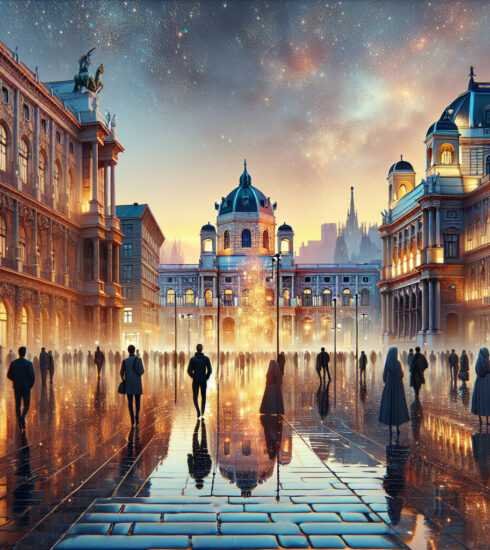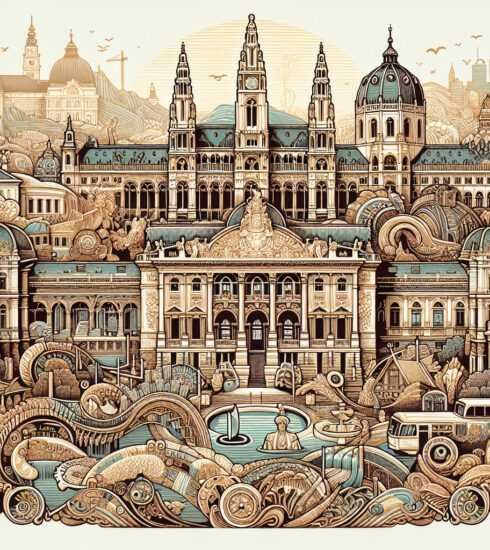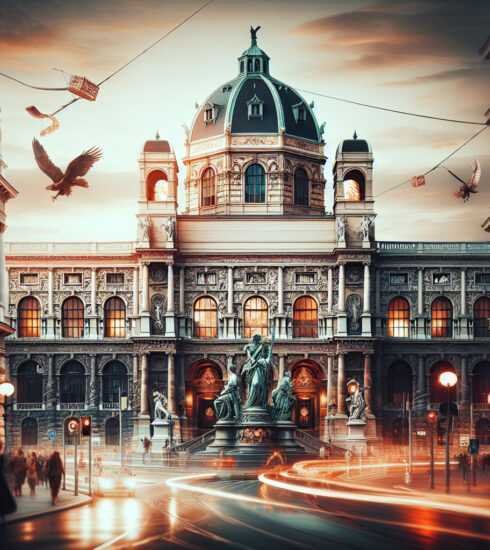Uncovering the Mosaic: Exploring Viennas Artistic Legends and the Stories They Tell
Introduction
Vienna, the capital city of Austria, is renowned for its rich history, stunning architecture, and vibrant art scene. Throughout the centuries, countless artists have called Vienna home, leaving behind a lasting legacy of artistic masterpieces and intriguing stories. In this article, we will delve into the mosaic of Vienna’s artistic legends, exploring the stories they tell through their works and the impact they have had on the city’s cultural landscape.
The Vienna Secession Movement: Gustav Klimt and Egon Schiele
One of the most influential movements in Vienna’s art history is the Vienna Secession. Established in 1897, the group aimed to break away from the traditional academic styles and create a platform for avant-garde artists. Two prominent figures from the Vienna Secession movement are Gustav Klimt and Egon Schiele.
1. Gustav Klimt: Gustav Klimt, an Austrian symbolist painter, became one of the most prominent members of the Vienna Secession. His distinctive style, characterized by intricate patterns, golden accents, and sensual depictions of women, became synonymous with the movement. Some of his most famous works include “The Kiss” and “Portrait of Adele Bloch-Bauer I.” Klimt’s art often explored themes of love, sexuality, and the human condition.2. Egon Schiele: Egon Schiele, a protege of Gustav Klimt, was known for his raw and provocative paintings. His works often depicted the human body in unconventional and distorted poses, challenging societal norms and conventions. Schiele’s art was considered controversial, and he faced criticism and legal troubles during his career. Despite the controversies, his unique artistic vision and contribution to the Vienna Secession movement cannot be overlooked.The Vienna Art Nouveau Movement: Koloman Moser and Otto Wagner
The Vienna Secession was closely followed by the Vienna Art Nouveau movement, which emerged at the end of the 19th century and flourished until the outbreak of World War I. This movement encompassed various art forms, including architecture, design, and visual arts. Two key figures associated with the Vienna Art Nouveau movement are Koloman Moser and Otto Wagner.
1. Koloman Moser: Koloman Moser was a versatile artist and a co-founder of the Vienna Secession. He excelled in various art forms, including painting, graphic design, and furniture design. Moser’s style was characterized by its geometric patterns, harmonious color schemes, and attention to detail. His contributions to the Vienna Art Nouveau movement can be seen in his designs for the Wiener Werkstätte, a workshop for art and craft.2. Otto Wagner: Otto Wagner was an architect and an influential figure in the Vienna Art Nouveau movement. Known for his innovative and functional designs, Wagner’s approach to architecture revolutionized Vienna’s urban landscape. His creations, such as the Vienna Postal Savings Bank and the Karlsplatz Stadtbahn Station, embodied the principles of the movement, combining decorative elements with practicality.The Vienna Modernism Movement: Oskar Kokoschka and Richard Gerstl
Following the Vienna Secession and Vienna Art Nouveau movements, Vienna became a haven for modernist artists in the early 20th century. This period, referred to as Vienna Modernism, witnessed the emergence of groundbreaking artists who pushed the boundaries of traditional artistic expressions. Two notable figures from this movement are Oskar Kokoschka and Richard Gerstl.
1. Oskar Kokoschka: Oskar Kokoschka was an Austrian painter, poet, and playwright. His art conveyed intense emotional experiences and often explored themes of love, war, and existentialism. Kokoschka’s works were characterized by their expressive brushwork and bold use of color. His notable paintings include “The Bride of the Wind” and “The Tempest.”2. Richard Gerstl: Richard Gerstl was an Austrian expressionist painter who explored the human form and psyche in his works. Although his career was short-lived, Gerstl’s art captivated audiences with its raw intensity and emotional depth. His works, such as “Self-Portrait with a Dead Brother” and “The Sisters of Otto Wagner,” showcased his unique style and uncompromising approach to art.Hidden Gems: Uncovering Vienna’s Artistic Legends
While the aforementioned artists have left an indelible mark on Vienna’s art scene, there are many hidden gems waiting to be discovered. To truly uncover Vienna’s artistic legends, one must venture beyond the well-known museums and explore the city’s hidden art treasures.
One such hidden gem is the Leopold Museum, which houses an extensive collection of Austrian art, including the works of Egon Schiele and Gustav Klimt. The museum offers a comprehensive insight into the Vienna Secession movement and the artistic achievements of its members.
Another hidden gem is the Belvedere Museum, which showcases an impressive collection of Austrian art, including works by Gustav Klimt. The museum’s highlight is undoubtedly Klimt’s famous painting, “The Kiss,” which mesmerizes visitors with its golden hues and romantic symbolism.
For those seeking a unique art experience, the KunstHausWien is a must-visit. Designed by the visionary artist Friedensreich Hundertwasser, the museum itself is a work of art. Inside, visitors can explore a diverse range of exhibits, including Hundertwasser’s own colorful and whimsical creations.
Conclusion
Vienna’s artistic legends continue to inspire and captivate audiences today, transcending time and borders. From the Vienna Secession movement to the Vienna Art Nouveau and Vienna Modernism movements, each era has contributed to the city’s vibrant cultural landscape. By exploring the works of artists such as Gustav Klimt, Egon Schiele, Koloman Moser, Otto Wagner, Oskar Kokoschka, and Richard Gerstl, one can unravel the stories and themes that have shaped Vienna’s artistic identity. Whether it’s the sensuality of Klimt’s “The Kiss,” the raw emotion in Schiele’s self-portraits, or the innovative designs of Wagner, Vienna’s artistic legends continue to enthrall and inspire art enthusiasts from around the world.
For more information on hidden gems in Vienna’s art scene, check out this article available at Vienna Trip. You can also explore the hidden art treasures of Vienna by visiting this article available at Vienna Trip.





